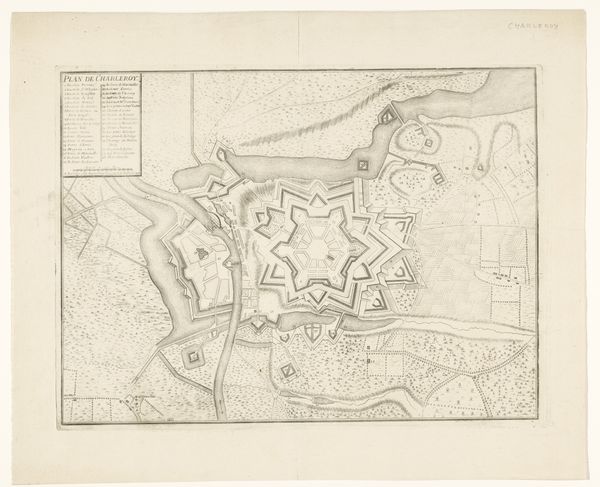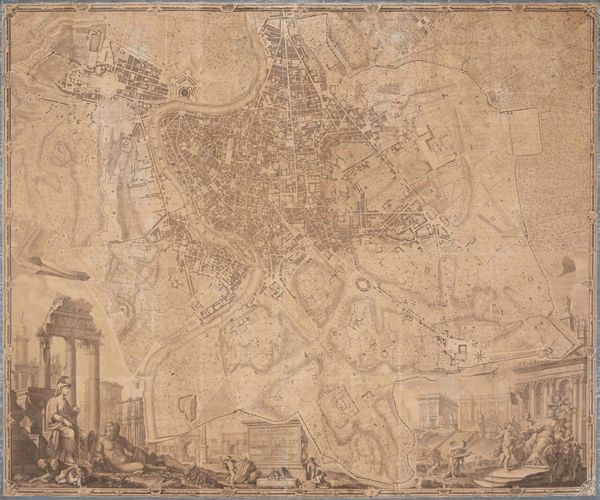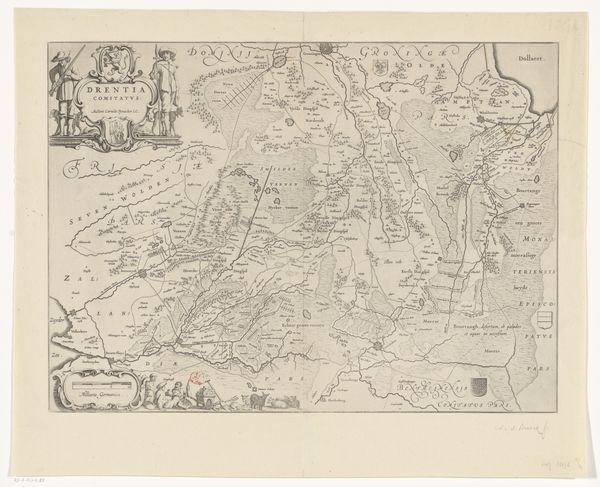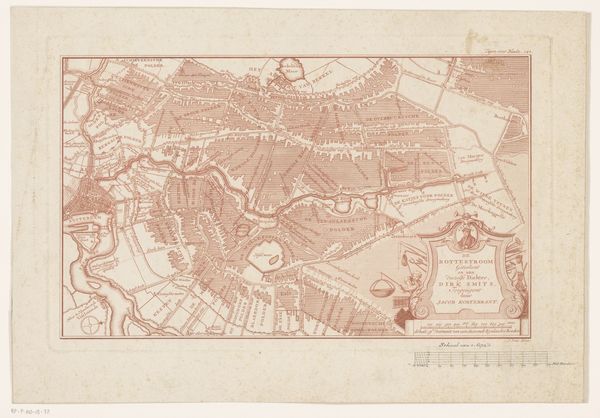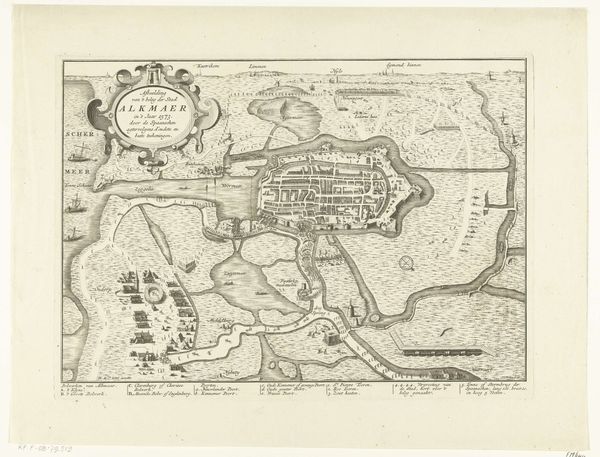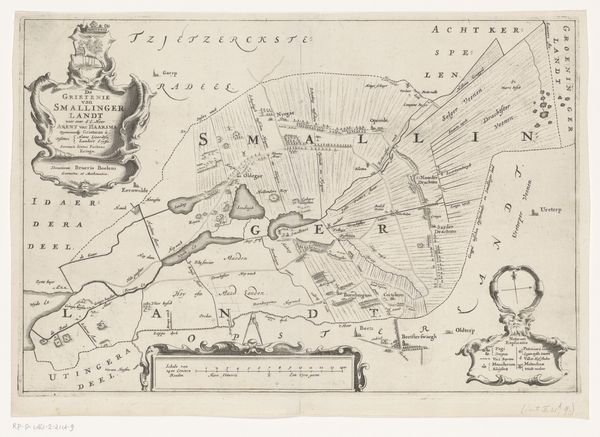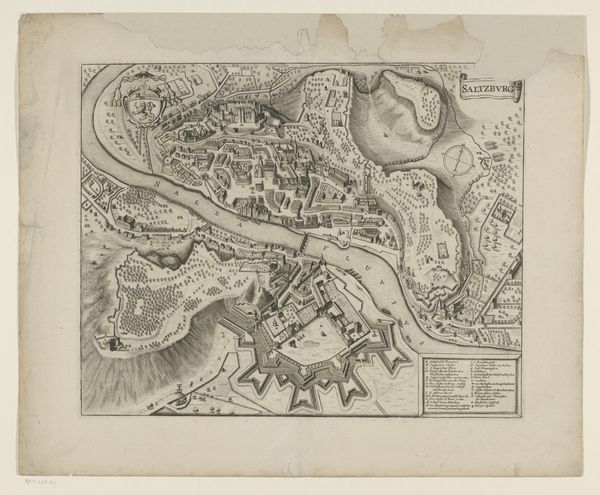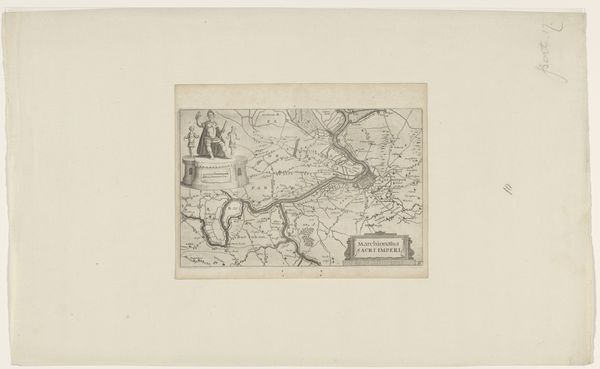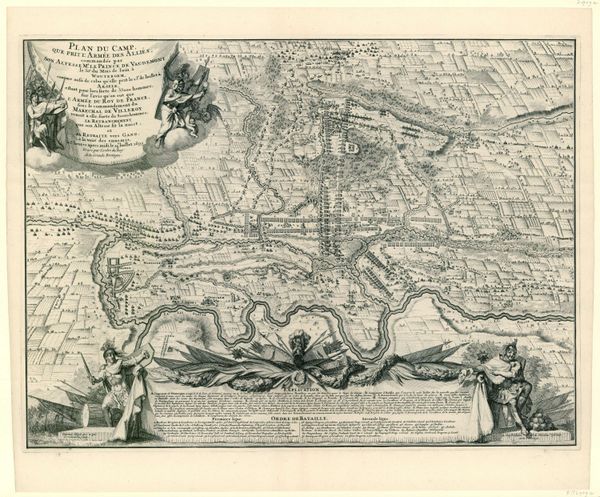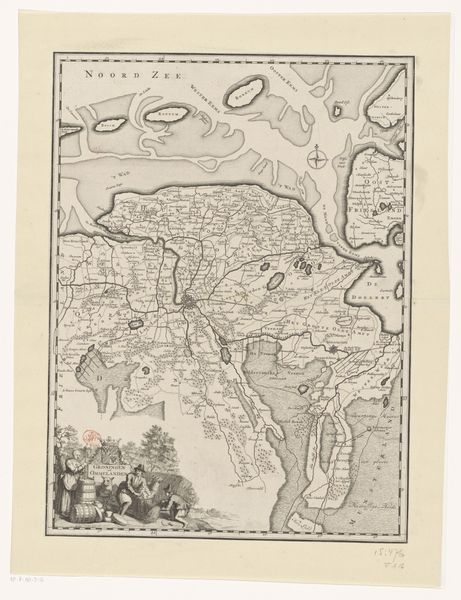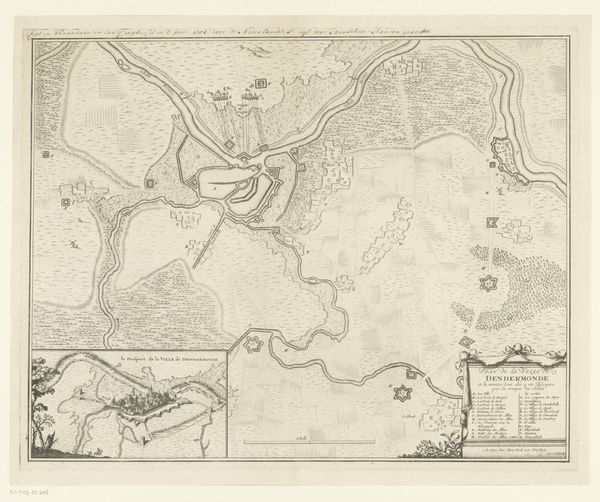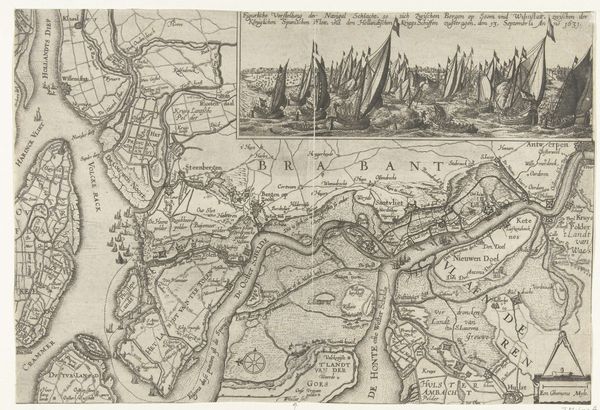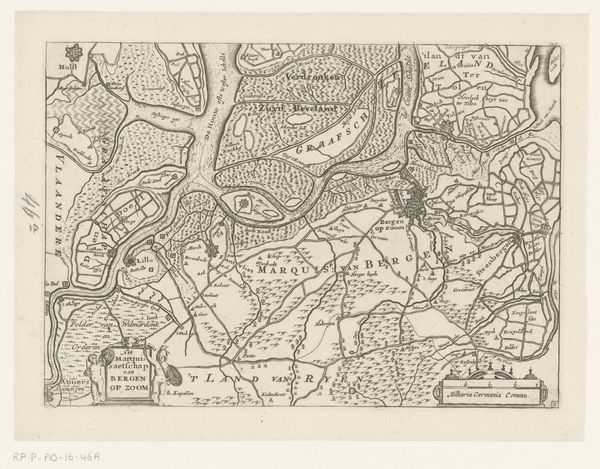
print, paper, engraving
#
neoclacissism
# print
#
paper
#
cityscape
#
engraving
Dimensions: height 571 mm, width 792 mm
Copyright: Rijks Museum: Open Domain
Curator: Standing before us is Jacques Joseph Huguenet's "Plattegrond van Rome," an engraving from 1841 rendered on paper. It presents a meticulously detailed map of Rome. What strikes you initially about it? Editor: Its immediate impact lies in its subdued tonality, an almost ghostly palimpsest of the ancient city. The meticulousness of the engraving conveys a sense of almost reverential study. The detail is simply remarkable. Curator: Indeed. The image embodies the neoclassical fascination with precision. Notice the careful linework. The formal arrangement on the page follows principles of balanced composition. There’s a semiotic narrative even in the topographical representation, no? Editor: Undoubtedly. Beyond pure cartography, Huguenet situates this plan within a historical dialogue. He is not only depicting Rome but invoking its layered past. This work is evocative of the way that power uses imagery to enforce itself onto a society. Curator: Quite astute. The inclusion of ruins and classical figures is more than decorative; it firmly establishes the connection with antiquity and underscores Rome's position as a wellspring of Western civilization. Editor: Yes, the composition serves power; note how the ruins and classical figures literally prop up and frame the city. This placement encourages viewers to accept Rome not simply as an existing urban entity, but as the linear culmination of centuries of Western social development and ideological significance. Curator: This neoclassical engagement is an artistic celebration of the rationality exemplified by Roman architecture. The city plan embodies order, civilization imposed upon nature—or even imposing itself through cultural dominance onto the viewer’s mind. Editor: And yet, there is also a fragility here. The medium—print on paper—is itself subject to decay, mirroring the very ruins depicted. I leave feeling conflicted, but ultimately appreciating the layering of meanings. Curator: It is a work that exists at a fascinating intersection. Huguenet captures a moment, both historical and formal. Editor: A worthwhile glimpse into the complex interplay of history, artistry, and social meaning within a seemingly straightforward depiction.
Comments
No comments
Be the first to comment and join the conversation on the ultimate creative platform.
